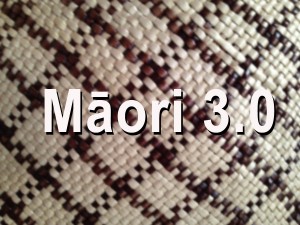Whānau Ora has shifted the way we should view government programmes and services for Māori. Before Whānau Ora the government was largely resourcing responses to perceived Māori needs, with these needs defined by disparities in health, income, education, housing, justice, etc. experienced by individual Māori and Māori households. Even then there were often difficulties defining these disparities or ‘gaps’ because of changes in the way Māori ethnicity was classified in official data, and the accuracy of data collection itself. Having said this, the elimination of Māori-non-Māori disparities should be pursued as Māori have a right to an equality of citizenship compared to non-Māori. This equality of citizenship cannot exist when Māori, on average, are dying at a much younger age; when proportionally more Māori young people are leaving school with no or few formal qualifications; or when Māori do not have access to the same level of health outcomes.
However the previous response to perceived Māori needs, let’s call it Māori 2.0, was based on half an understanding of what Māori wanted. In other words, it was based on looking at how Māori differed from non-Māori with a gaze still hazy with deficit-based interpretations. There was a brief time in the early 2000s when there was a push to understand the social and economic determinants of Māori health and wellbeing, and grapple with the responsibilities that government agencies and their programmes and services had for ensuring that Māori in need of support and help were not re-victimised. Prior to this the emphasis seemed to be largely on a continuation of an integrationist agenda that held that Māori would be fine if they could just integrate into New Zealand society. Integration was described as
“…a dynamic process by which Maori and pakeha are being drawn closer together, in the physical sense of the mingling of two populations as well as in the mental and cultural senses where differences are gradually diminishing” (Booth & Hunn, 1962, p. 2).
Māori 1.0, of course, preceded this integrationist agenda and offered up the hope that Māori might ‘pass’ into, and assimilate with non-Māori New Zealand society. Demonstrations that Māori could achieve this were met with backlash. For example, graduates from Te Aute College in the late 1800s, including Apirana Ngata, went on to tertiary education and Māori leadership. It wasn’t long after this cohort successfully passed through Te Aute that pressure was put on the Principal to change the school’s curriculum from one focused on academic pursuits to one reflecting horticultural skills. Assimilation, it seemed, was all well and good in theory but when some Māori started to gather about them the tools and expertise of the Pākehā then doors needed to be closed.
This brings me back to Whānau Ora, and Māori 3.0 – the opportunity for the (half) story of Māori disparities to be complemented by the story of Māori aspirations and dreams. While Māori have resisted, protested about, and sought justice in ways that have disrupted Māori 1.0 and 2.0, official policies and service delivery mechanisms (e.g., schooling, justice systems) bought into these agendas. Government services, policies and legislation have, over our short history of Māori and Pākehā together in these lands, been intent on assimilation and then integration – sort of like trying to push the ‘M’ from an alphabet fridge magnet collection into a ‘P’-shaped hole.
Māori now have Whānau Ora as an official Māori 3.0 policy. To date, the focus of Whānau Ora has been on the strengthening of Māori providers and provider collectives to deliver whānau-centred services, and on whānau planning. There is a risk that we’ll slip back into Māori 2.0 if we continue to conceive of Whānau Ora as just about Māori service providers and whānau themselves changing. Although this change might be aspirational, with whānau in the driving seat, it may quickly come up against a ‘bridge-down’ sign if the forces that control the majority of the delivery of services and programmes to whānau do not change. Even a chauffeur or navigator may not be able to find a suitable detour route.
Unless there is some serious contemplation of, and action for, structural change within government agencies and services then Māori 3.0, if it lives on, will continue only as a contained back room affair rather than the outrageous portent of Māori wellness and prosperity that it has the potential to be. But then wasn’t it Moana Jackson who asked a question along the lines of, ‘What has the government got to fear from a healthy, articulate and dynamic Māori population?’
References
Booth, J. M. & Hunn, J. K. (1962). Integration of Maori and Pakeha (Special Studies No. 1). Wellington: Department of Maori Affairs.

